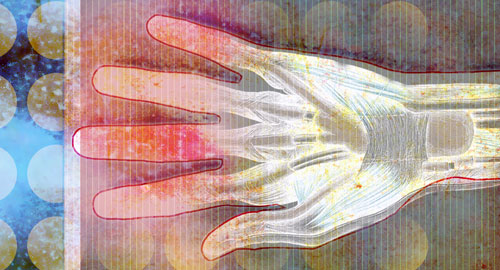 Patients with carpal tunnel syndrome (CTS) experience pain, numbness and tingling that can be characterized as an upper limb neuropathy. CTS is more common in women, with a female to male ratio of 3:1. Various studies have described the incidence of CTS in the general population as between 2.5 and 5 cases per 1,000 person years. Approximately one-third of patients newly diagnosed with CTS receive operative treatment, and this percentage appears to be increasing.1 Although surgery is known to be an effective treatment, the question remains: Which patients are the best candidates for surgery?
Patients with carpal tunnel syndrome (CTS) experience pain, numbness and tingling that can be characterized as an upper limb neuropathy. CTS is more common in women, with a female to male ratio of 3:1. Various studies have described the incidence of CTS in the general population as between 2.5 and 5 cases per 1,000 person years. Approximately one-third of patients newly diagnosed with CTS receive operative treatment, and this percentage appears to be increasing.1 Although surgery is known to be an effective treatment, the question remains: Which patients are the best candidates for surgery?
Individuals with Parkinson’s disease may be especially vulnerable to CTS. One study suggests that patients with Parkinson’s may be at increased risk of CTS because of the repetitive movement due to tremor.2 Others have noted the peripheral neuropathy that is associated with Parkinson’s and wondered whether peripheral neuropathy is intrinsic to Parkinson’s, a consequence of levodopa exposure or both.3 A body of evidence suggests that a form of small fiber neuropathy is intrinsic to Parkinson’s, and thus, experts have suggested that patients with early and advanced Parkinson’s be strictly monitored for subtle signs of neuropathy. Such evaluation should make it possible for healthcare providers to detect early symptoms of peripheral neuropathy and potentially provide better management.
Marine Loizon, a researcher at the Hopital Neurologique Pierre Wertheimer in France, and colleagues investigated the connection between CTS and Parkinson’s and published their estimate of the incidence of clinically symptomatic CTS in patients with Parkinson’s online Sept. 13 in the Journal of Neurology.4 The researchers initiated their study in response to the observation that several of their patients with Parkinson’s developed CTS following subthalamic nucleus deep brain stimulation (STN-DBS).
The researchers examined 115 consecutive Parkinson’s patients between 2010 and 2014 who underwent STN-DBS at the Neurological Hospital in Lyon, France. CTS was diagnosed by clinical examination in combination with muscle and nerve examination. The investigators found that 7.8% (nine) of their patients developed CTS in the two years after surgery. Three of these patients required surgery to treat the CTS. The authors note that this incidence of CTS is significantly higher than the incidence of CTS observed in the general French population.
The patients in the study who were diagnosed with CTS had a mean age of 64 years (51–70) and were mostly female—3:1 ratio of female to male. Of the patients diagnosed with CTS, six had a tremor-dominant Parkinsonian phenotype, two had an akinetic-rigid dominant phenotype and one had a mix phenotype. The investigators concluded that the relationship between STN-DBS and CST should be explored by a prospective study with muscle and nerve examination and oriented neurological examination prior to surgery. Such a study design should enable the detection of any CTS that may be present in patients with Parkinson’s prior to deep brain stimulation.
